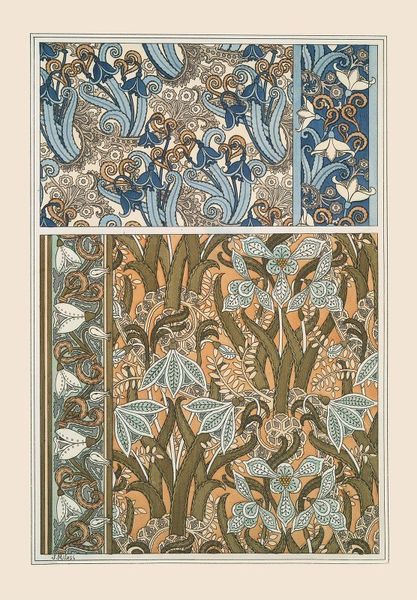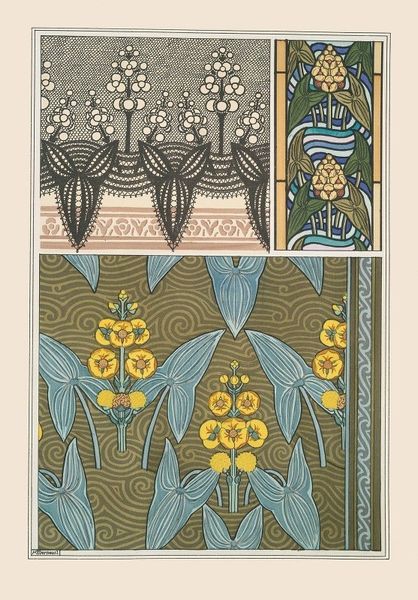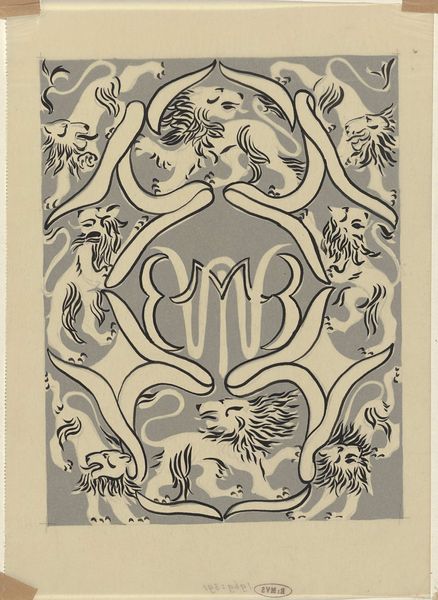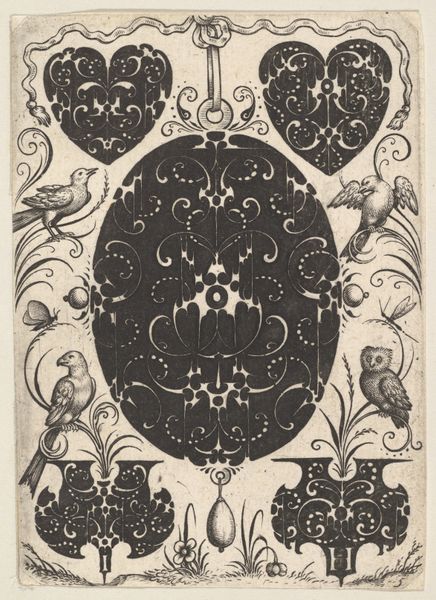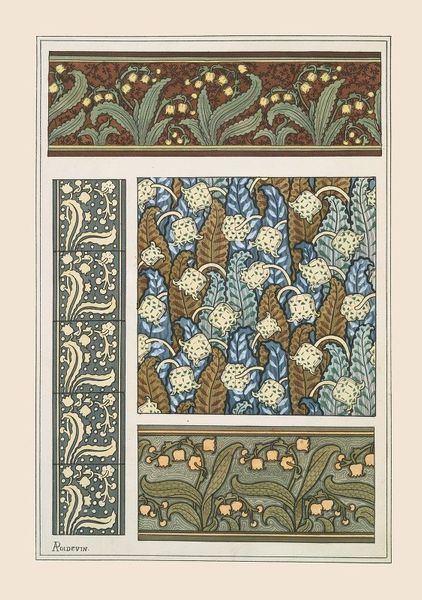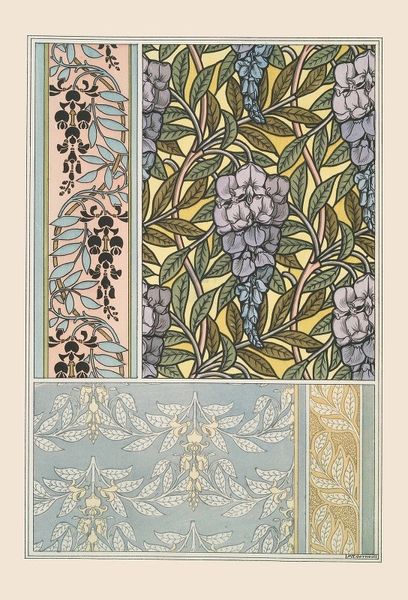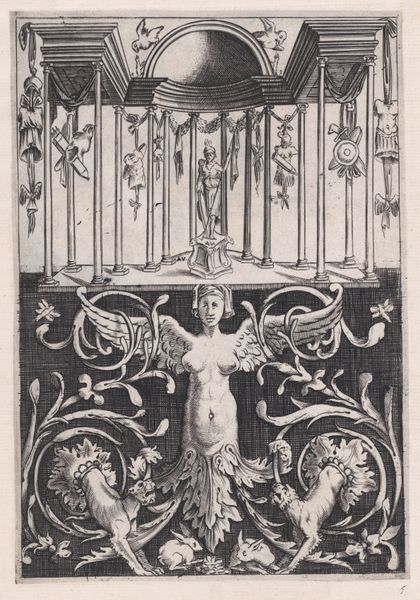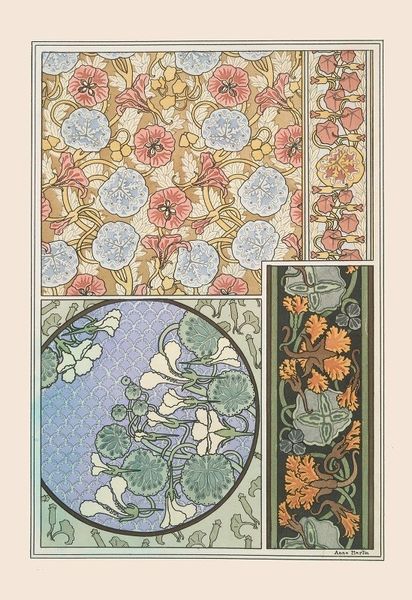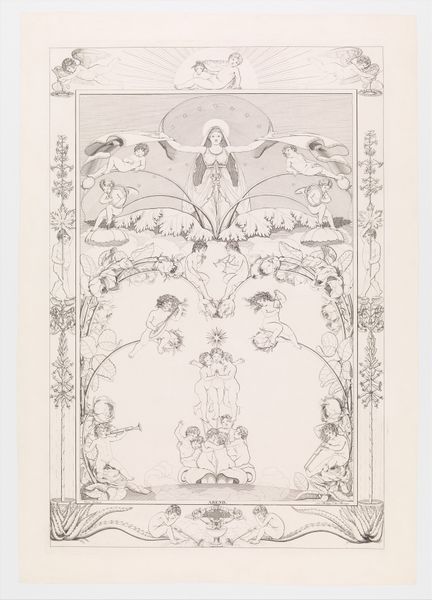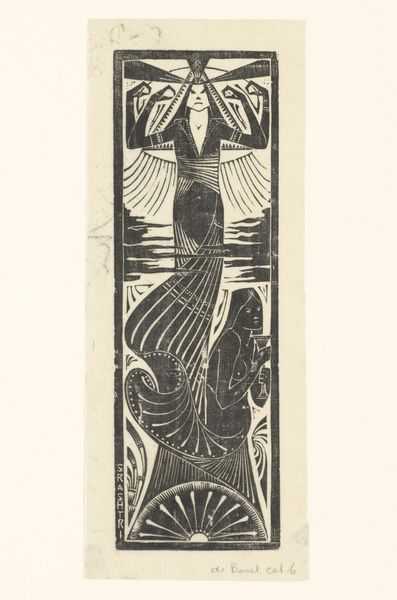
Cigales et anémones, bordure de napperon. Aras et platane, fonte. 1897
0:00
0:00
drawing
#
drawing
#
naturalistic pattern
#
art-nouveau
#
pattern
#
geometric pattern
#
abstract pattern
#
geometric
#
intricate pattern
#
decorative-art
Copyright: Public Domain: Artvee
Editor: This drawing by Maurice Pillard Verneuil from 1897, titled *Cigales et anémones, bordure de napperon. Aras et platane, fonte.* features a rather intricate pattern, probably intended for a decorative tablecloth border. What’s particularly striking to me is the presence of both cicadas and macaws – a strange combination! How do you interpret this work? Curator: It is fascinating, isn’t it? The Art Nouveau movement often embraced this kind of unexpected juxtaposition of natural motifs, aiming to collapse hierarchies between the "exotic" and the "local." Think about the socio-political context: France was deep into its colonial project. Art like this, incorporating exotic flora and fauna, arguably served to visually naturalize and aestheticize colonial power. What do you make of that interpretation? Editor: That’s a really interesting point. It hadn't occurred to me to read it in that way. The very stylized macaws, almost rendered as mythical creatures amidst the very distinctly rendered maple leaves, now seems more loaded. I initially thought of them as purely decorative. Curator: Exactly! And it's crucial to consider how this "decorative art" intersected with social and power dynamics. These aren't just pretty patterns; they are statements – albeit subtle ones – about the relationship between France and the rest of the world. Verneuil is making very pointed choices that reinforce colonial fantasies, if perhaps unconsciously. This period's fascination with nature masks its political intent. Does that make you reconsider how you view other Art Nouveau pieces? Editor: Absolutely. It provides a new framework for understanding the movement's wider implications. Thanks for helping me look at art in a completely different way! Curator: My pleasure! This intersectional lens encourages a more critical and engaged approach to art history.
Comments
No comments
Be the first to comment and join the conversation on the ultimate creative platform.
